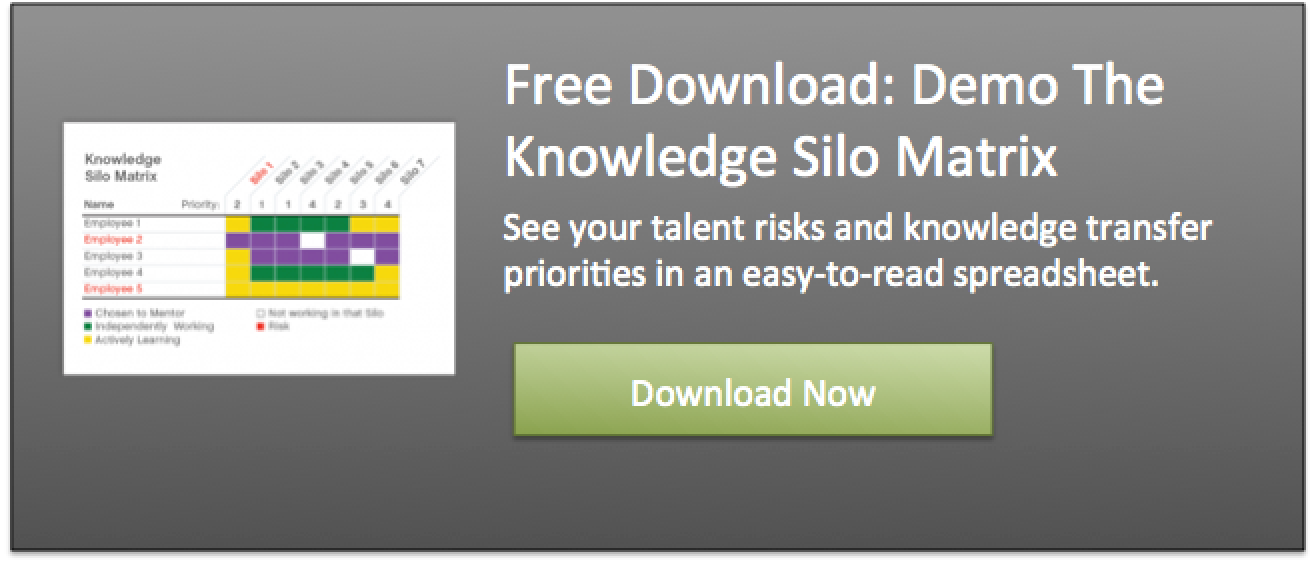
Much has been written lately about the need to jettison traditional performance management processes including this piece by McKinsey and a terrific new book by my friend and colleague, Tamra Chandler. One clear recommendation from this new wave is to focus performance discussions more on what is needed for the future than what happened in the past. Another key theme is to remove the annual goal setting and feedback conversation and replace it with regular updates and dialogue between employees and their managers so they stay in sync. Since improving capacity for agile thinking and working is on the top of every executive’s list, this makes great sense.
In the same way, managing talent risk isn’t just about an annual conversation to ensure that your senior executives have proper successors. It should be built into the day-to-day business performance management conversations shared between leadership and frontline employees so that everyone has a clear routine for prioritizing and mitigating talent risks. In my new book Do You Have Who It Takes? Managing Talent Risk in a High-Stakes Workforce, I devote an entire chapter to these conversations from the board all the way to the front line.
Performance Management Improved by Talent Risk Management
In this post I want to show how the talent risk data we capture in two of our knowledge transfer tools, the Knowledge Silo Matrix(KSM) and Skill Development Plan (SDP), can be used to guide these routine, forward thinking performance management conversations, turning them into performance planning that motivates, clarifies and expedites success.
The KSM is a terrific performance management and planning tool because it provides a framework for finding the intersection between the upcoming work in the 3 to 36-month time horizon and the employee’s interests and aspirations. A manager and employee can talk about the silos of knowledge where the employee is currently working along with the list of silos that will need more capacity and discuss where it might make sense for the employee to learn something new. If taking on a new silo requires that employee to reduce or remove their work in an existing silo, they can discuss how that employee can transfer their knowledge to another resource. And, if the employee can’t find a new silo of interest in their existing team, they can talk about stretch or developmental assignments outside their team that can be career developing without requiring a short-term move. If the employee needs to tune up the quality/consistency of their work in an existing silo, their manager can mark them yellow on the KSM and explain why.
Once the top-line performance management and planning conversation has been shaped by reviewing the KSM, the manager and employee can quickly turn to a Skill Development Plan (SDP) to guide the more detailed discussion of developmental goals. SDPs deconstruct the knowledge silos in the KSM into a master list of tasks and skills required to be successful. If the employee is developing expertise in a new silo, the manager can introduce the employee to an expert from within that silo and they can customize a plan for that employee’s development. When there is business urgency, this plan can have short-term dates and metrics for moving that employee quickly into the work. If the new silo is more of a long-term play, the dates and metrics can be eased in over time. In neither case is the development plan “soft.” It is just faster or slower depending on the specific intentions of the plan and the metrics are always clear and tracked by the manager. The SDP can be reviewed regularly in a 1-on-1 and will certainly spark the kind of routine conversations suggested by the new evolution in performance management.
If the employee needs to improve in an existing silo, the manager can use the SDP as a feedback tool. Each skill/task in the SDP is associated with an expert from within the organization who is trained to explain how to do that work the “right way.” Critical performance feedback from the manager (and the expert) can include enough specific deviations from this standard so that the employee can chart a clear path to success. Since SDPs use plain language to explain measurable expectations, the employee is motivated to hit the mark or prove that, in fact, they aren’t a fit for work in that silo.
Improve Your Performance Management Process Today
Managing talent risk fits hand in glove with the new trends toward tying business performance management with employee performance planning to produce a workforce that is nimble and motivated to deliver both near and longer term results. When you bring talent risk data to the conversation, you’ll foster the kind of clarity, confidence and speed that supports a healthy and productive manager/employee relationship.

